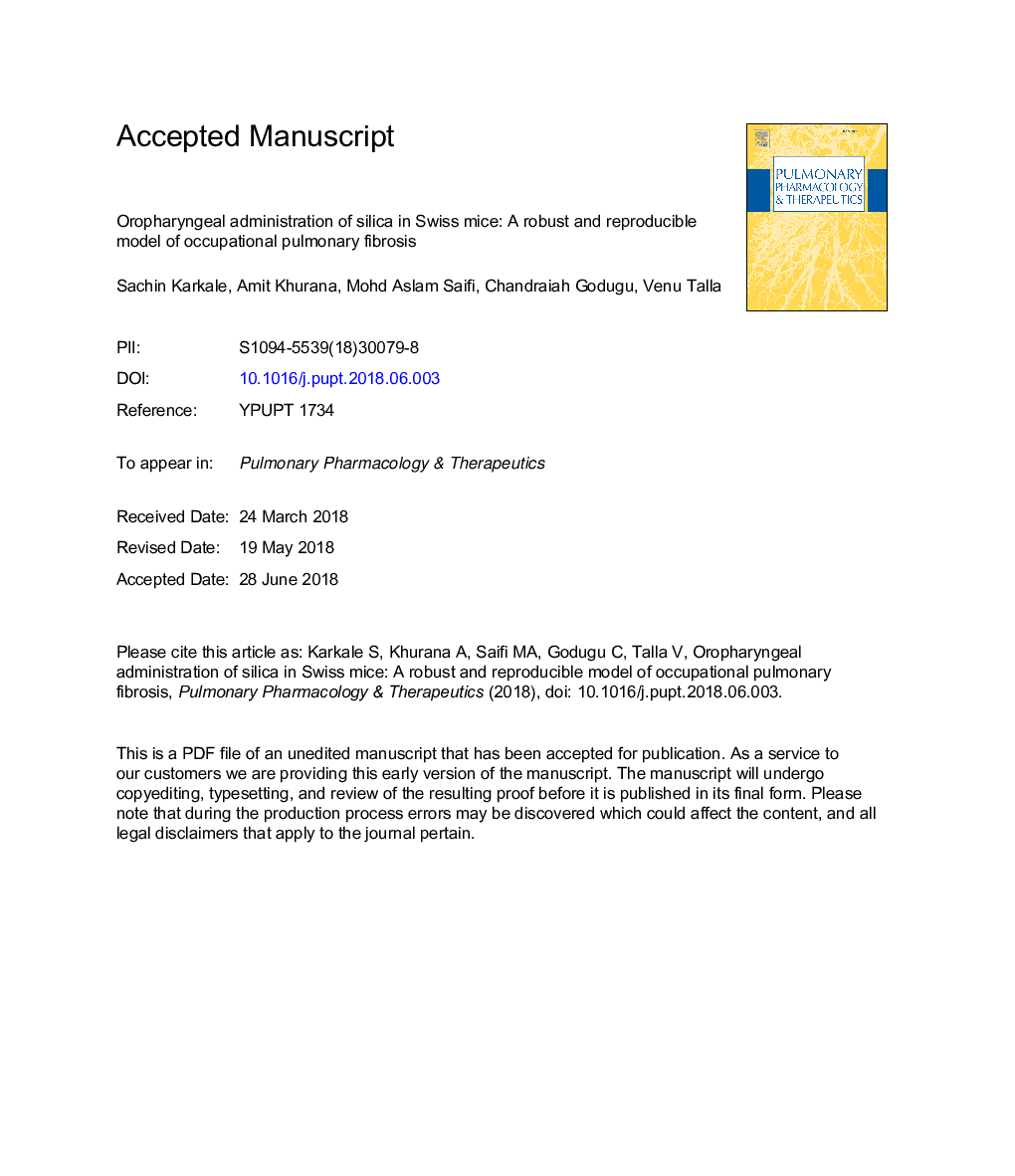| Article ID | Journal | Published Year | Pages | File Type |
|---|---|---|---|---|
| 8537696 | Pulmonary Pharmacology & Therapeutics | 2018 | 28 Pages |
Abstract
Pulmonary fibrosis (PF) is a lethal end stage of interstitial lung disease with increasing prevalence. The disease burden of PF has seen a sharp surge in the past two decades owing to entry of heavy amount of particulate matter due to industrialization and urbanization. In this work, we developed an oropharyngeal aspiration model of silica (1.5 mg/mice) induced pulmonary fibrosis as a homogeneous, reproducible, simple and alternative strategy in Swiss albino mice. Various BALF (protein, albumin, cell count), biochemical parameters (MDA, GSH, hydroxyproline), cytokines (IL-1β, IL-6, TNF-α and TGF-β1), histological (H&E and PSR staining) and protein expression (N-cadherin, vimentin, α-SMA, CTGF, collagen-1) studies were conducted to validate the model. Oropharyngeal administration of silica in Swiss mice produced significantly changes in lung morphology with statistically higher lung weights compared to normal control animals. The silica treated mice showed profoundly elevated BALF soluble and cytological parameters and enhanced oxidative and nitrosative stress in lungs. The levels of hydroxyproline were increased by 2.6 fold in the silica treated mice. The expression of pro-inflammatory cytokines were profoundly increased in silica treated mice. The histology and PSR staining indicated increased inflammatory infiltration and staggering fibrosis in silica treated group. In addition, the expression of EMT markers (N-cadherin, vimentin, α-SMA and CTGF) were significantly increased indicating their role in silica induced pulmonary fibrosis. Our work clearly demonstrates the superiority of stress free oropharyngeal instillation of silica with dose reduction over the conventional invasive and non-homogeneous intratracheal route.
Related Topics
Health Sciences
Medicine and Dentistry
Pulmonary and Respiratory Medicine
Authors
Sachin Karkale, Amit Khurana, Mohd Aslam Saifi, Chandraiah Godugu, Venu Talla,
